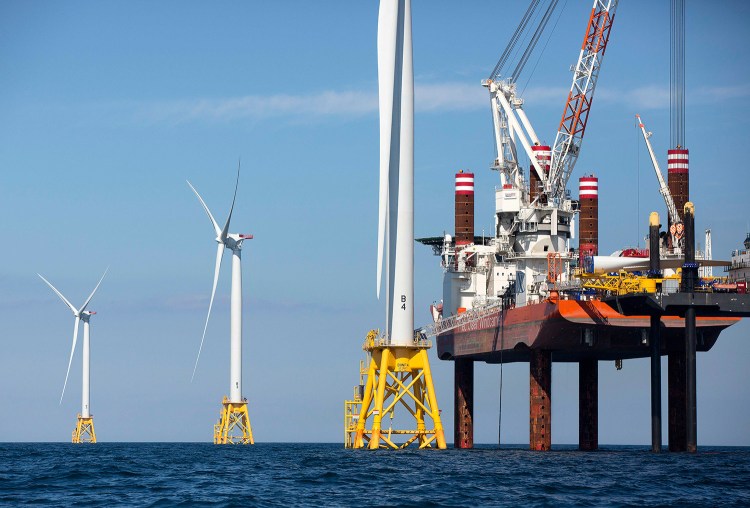Tuesday’s decision by the Maine Public Utilities Commission to further review the terms of the power-contract for the Maine Aqua Ventus wind farm comes as offshore wind energy, refined for decades in Europe, is poised to become a major new industry in the United States. Policies by state governments from Massachusetts to Virginia are attracting billions of dollars in global investment to the East Coast.
Nearly 10 years ago, Maine aspired to be a leader in ocean energy by passing legislation that set ambitious goals for wind power. But those priorities shifted after 2010 with the election of Republican Gov. Paul LePage, a strident critic of the above-market costs that have underpinned many major renewable energy projects.
Since then, the center of gravity – and the potential for jobs and investment – has formed in southern New England.
Massachusetts has led the transition, ordering its utilities to purchase 1,600 megawatts of offshore wind by 2027, equal to 10 percent to 15 percent of the state’s annual electricity consumption. Officials there announced last month that Danish energy investor Copenhagen Infrastructure Partners and Avangrid Renewables, part of the Spanish company that owns Central Maine Power, had been selected to build the country’s first large-scale offshore wind project. Vineyard Wind would put 100 or so turbines a dozen miles off Martha’s Vineyard. It would be rated at 800 megawatts, the amount of energy used by 400,000 homes.
The Massachusetts Clean Energy Center has estimated that offshore wind could create up to 9,850 jobs over the next decade and generate $2.1 billion in spending. Much of the activity likely will be centered in New Bedford, where the state has invested millions of dollars to prepare the fishing port as a regional hub to deploy turbines and service wind farms.
Also last month, neighboring Rhode Island announced it had picked a 400-megawatt project called Revolution Wind. The developer, Deepwater Wind, had built a demonstration-scale project off Block Island in 2015.
While the price of power from these projects is still being negotiated with utilities, developers and supporters say consumers will save money over time, as bigger turbines produce more power at lower costs. Vineyard Wind estimates the savings at $3.7 billion over its 20-year contract. Bryan Martin, Deepwater’s chairman, last week told Bloomberg the price of new wind projects will be able to compete with natural gas in New England, although experts point out that wind farms can’t reliably produce power all the time.
These projects involve conventional offshore wind towers, like the ones in Europe, set in the shallow seabed of the Continental Shelf. Beyond that lies the promise of anchoring floating platforms in deeper water – out of sight of coastal residents – where wind speeds are more consistent and the power potential is greater.
That’s the market Maine Aqua Ventus is targeting.
In 2013, Cianbro Corp. built a one-eighth-scale hull prototype, which was tested off Castine. The state’s largest construction company and a partner in Maine Aqua Ventus, Cianbro wants to fabricate full-scale hulls at its riverside facility in Hampden. Supporters say building the floating platforms and towing them to wind farm sites around the country or overseas can launch a new work sector in Maine.
Floating technologies are being tested and proposed around the world, including in California.
In April, the Redwood Coast Energy Authority selected a consortium of companies to develop a floating offshore wind farm off the coast of Humboldt County.
The planned 100-150 megawatt floating offshore wind farm would be 20 miles off the coast of Eureka, California. The partners include Principle Power, which in 2011 deployed a 2-megawatt prototype off Portugal called WindFloat, a test that was similar in some ways to UMaine’s demonstration off Castine. Also working on the project is EDP Renewables, a Portuguese energy company and the world’s fourth-largest wind energy producer.
Last year, a Norwegian company that wanted to build a demonstration floating wind farm off the Maine coast, but was rebuffed by LePage, began operating a 30-megawatt project off Scotland. Hywind Scotland has the capacity to power 20,000 homes.
Tux Turkel can be contacted at 791-6462 or at:
tturkel@pressherald.com
Twitter: TuxTurkel
Send questions/comments to the editors.




Comments are no longer available on this story